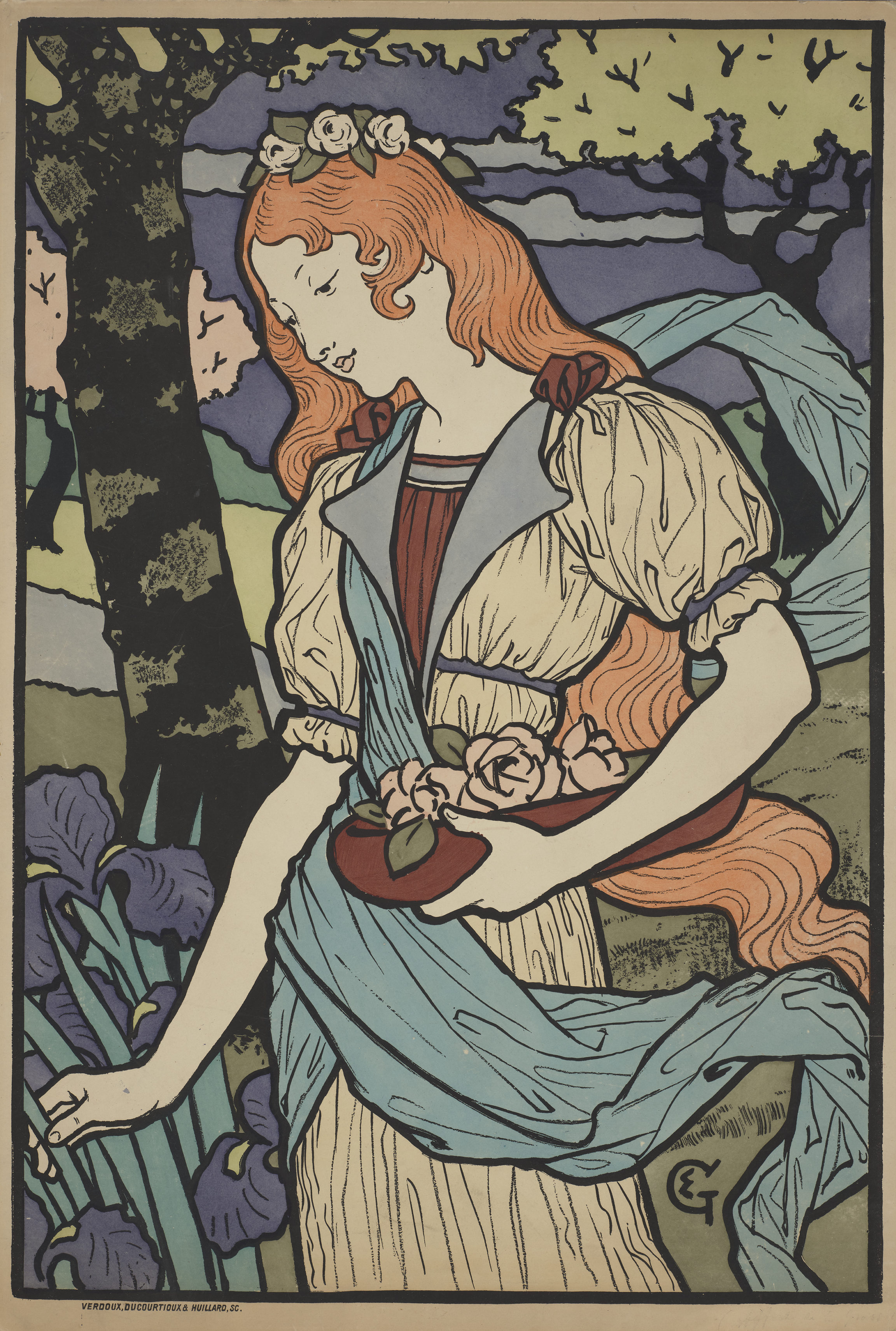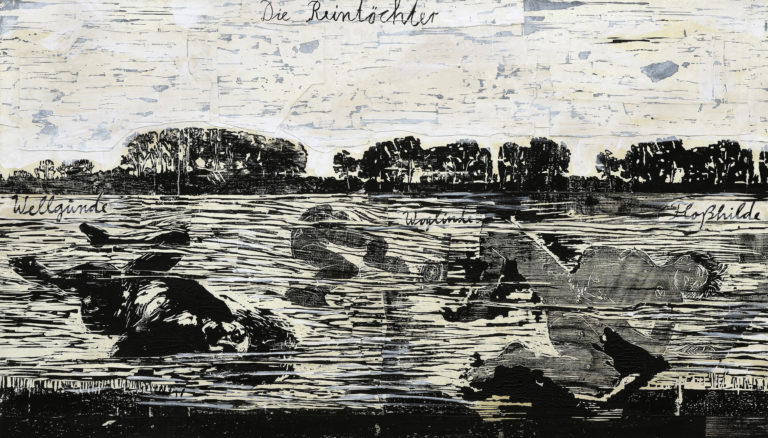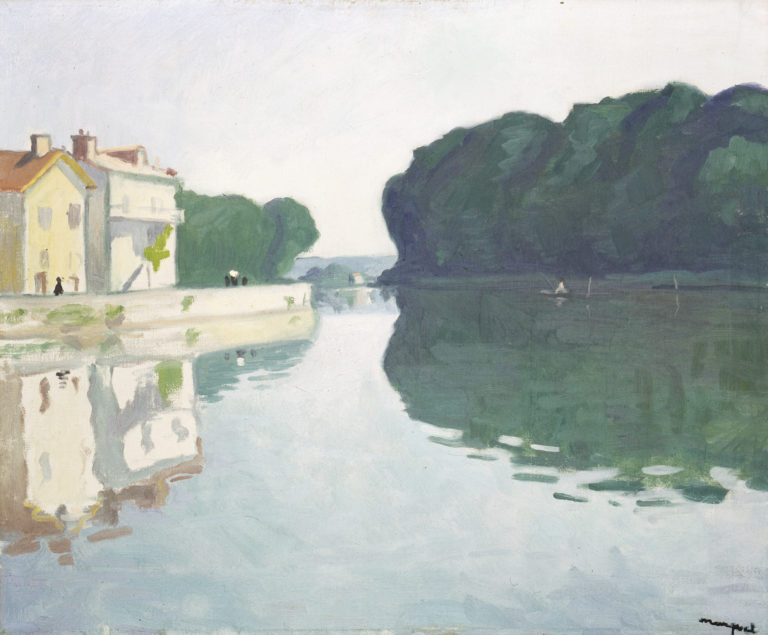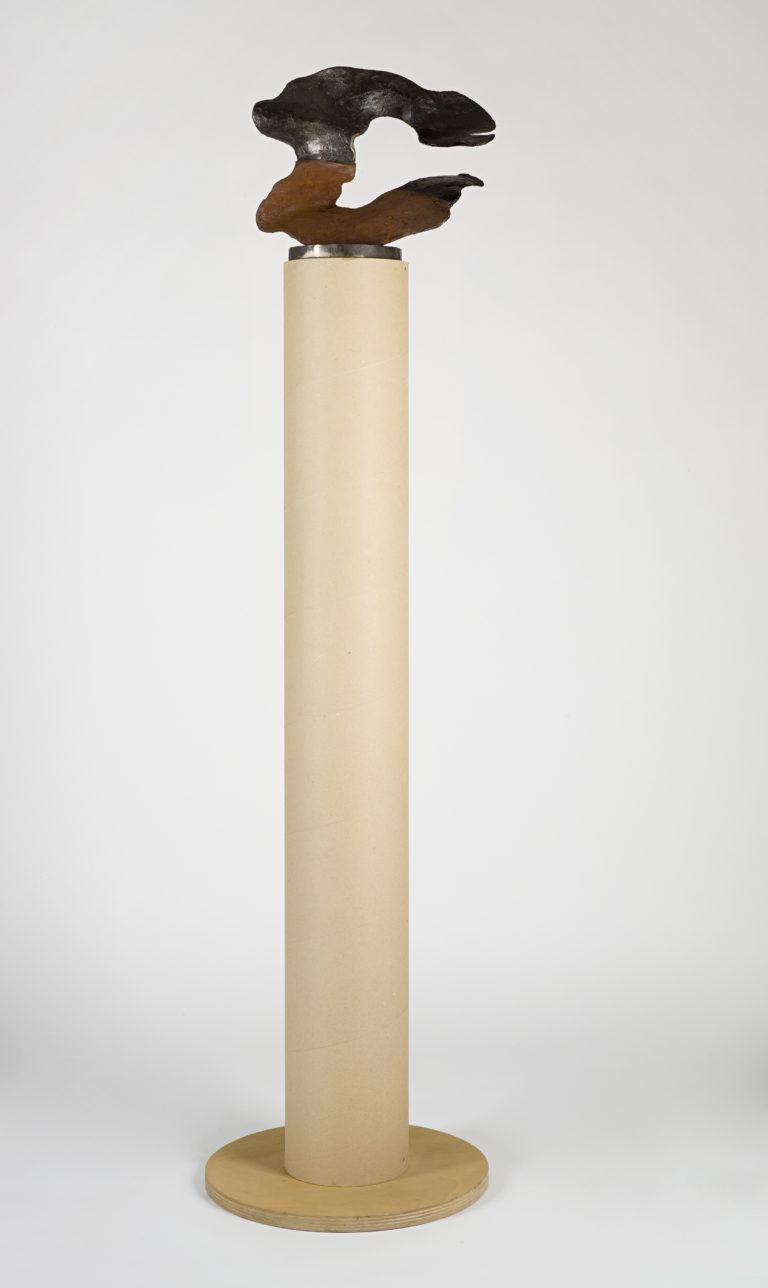Bibliography
Nicholas-Henri Zmelty, ‘Eugène Grasset, l’autre roi de l’affiche,’ in Catherine Lepdor (ed.), Eugène Grasset. L’art et l’ornement, exh. cat. Lausanne, Musée cantonal des Beaux-Arts, Milan, Editions 5 Continents, 2011: 67-73.
Anne Murray-Robertson, Grasset: une certaine image de la femme, exh. cat. Gingins, Fondation Neumann, Milan, Skira, 1999.




Eugène Grasset made his first forays into poster design in the mid-1880s and soon acquired an excellent reputation, working both commercially and for publishers as well as for art exhibitions and the theatre. His first compositions drew on the neo-medieval register and took a painterly approach, but from the early 1890s on, his formal language was influenced by Japanese prints and gained in limpidity and monumentality. The drawings were strongly outlined with even zones of colour producing great luminosity. However, Grasset’s tone remained severe and he refused to produce the kind of loud, alluring images required by advertising. His timeless women have the solemnity of classical allegories.
In its extreme formal simplification and great tonal freshness, with broad expanses of colour delimited by black contours, this poster for an exhibition of French decorative art at the Grafton Gallery in London applied everything that Grasset had learnt from his practice of making stained glass. The young woman, her body draped, her long red hair untied, is shown at knee height and in half profile, slightly off-centre. Her expression pensive, she holds a basket of roses and is picking a flower from a bed of irises in the foreground, inspired by the prints of Hiroshige and Hokusai.
The neo-Botticellian look of the gardener and the correspondences the artist suggests between nature and the female temperament were widely echoed by his contemporaries. From symbolist descriptions of this work it is clear that the way it was received at the time was very different from our response today. In 1894, for example, the Swiss artist William Ritter spoke of the poster as follows: ‘A vision that one never forgets, in which the anaemia and chlorosis of the decadents join with the deep, intense radiance of stained glass.’